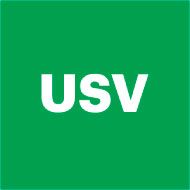In early stage investing, one of the most critical things is the ability to continue to participate in the follow on rounds to protect your ownership interest. I learned this the hard way fairly early in my career when I was helping to manage a small fund ($25mm) and we couldn’t put more than $2.5mm into each investment.
We’d start with something like $750k to $1mm in our original investment and then take our pro-rata share of the follow-on rounds. It usually worked out, but sometimes it didn’t. And when it didn’t work out, it was painful.
There are always deals in a fund that just take a longer time and more money to get where they want to go. Most venture deals have an A round, a B round, and a C round. A few end up with E, F, and G rounds. And that doesn’t necessarily make them bad investments. In fact, some of my very best investments, like Multex, Bigfoot Interactive, comScore, to mention a few of them, fall into this category. All of them produced or will produce 5-10x returns on the entire investment. But it is also true of all of these companies that the very best returns were to be had in the last round, the proverbial “Z round”.
And when you put up the first money, stick with the investment for close to ten years, provide leadership on the board, recruit the new investors, etc, etc, and then can’t participate in the last round (or can’t participate for your share), it hurts. Said another way, sometimes all the work you do for five years is just the setup for the best investment opportunity, the last round, and smart VCs will make sure they have sufficient reserves to pounce on those opportunities when they show up in their portfolios.
At Union Square Ventures, we are fully aware that a subset of our investments, maybe no more than 20% of them, will require more money than anyone can predict. And we are reserving for those opportunities. In fact, Andrew is in the middle of building a spreadsheet that will allow us to do some pretty interesting work around our reserves. RIght now, it’s pretty basic. We lay out each investment, how much we’ve invested to date, and then project the timing and probabilities of the future rounds and our share of them.
Andrew pointed out that we could do a monte carlo analysis around this data set. I am not a huge fan of monte carlo analysis, preferring a simple expected value analysis, but once we have the data, we can do most anything we want to with it.
Our style of investing, which often involves Union Square Ventures participating in the angel round, then leading the first venture round, requires that we start with fairly modest investment amounts. We talked about this in our deal size post last fall. To date, we have made eleven investments (one has yet to be announced but hopefully will be shortly). Our average investment in these eleven companies is $2mm, but we have as little as $275k in invested and as much as $6mm invested. We are modelling how these small $275k investments can turn into the $6mm+ positions we need to effectively invest a $125mm fund.
Our gut instinct, based on Brad and my combined 35 years in the VC business, is that we’ll have plenty of opportunities to “go big” in our companies when the time is right. But our model is a bit different than the average venture firm that starts with a typical $3mm investment and grows from there.
So modelling this out, getting our heads around the appropriate level of reserves, and setting up the fund to “pounce on the Z rounds” is a great exercise and I am glad we are doing it. But one thing is for sure, even when we finish the analysis, we are going to add a reserve on top of that.
Because you never know how much money you’ll need for some of your best investments.

